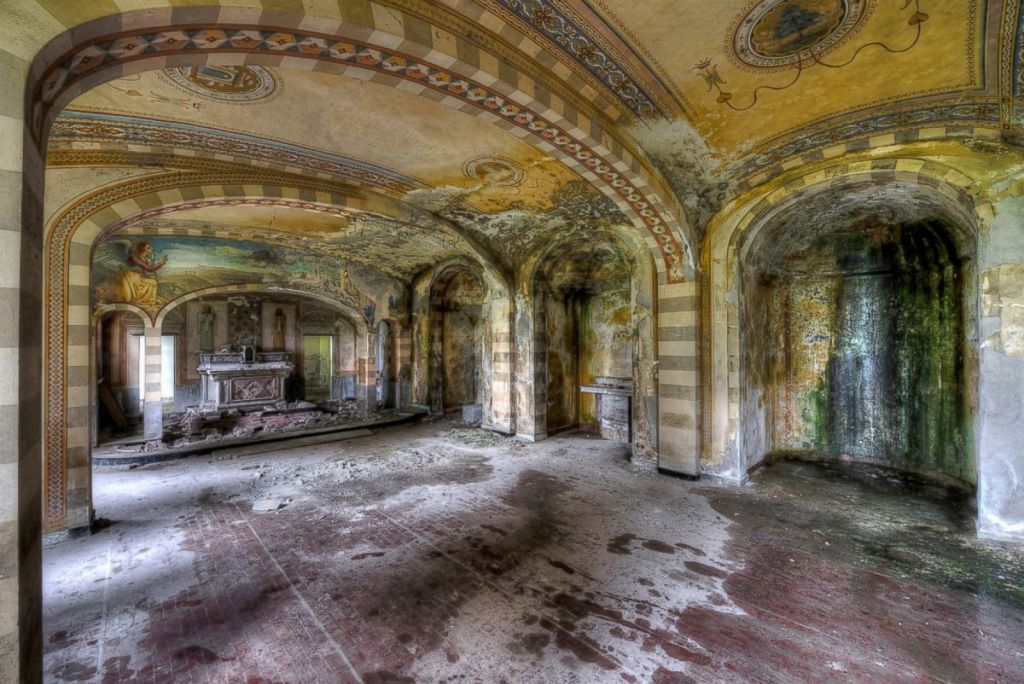Abandoned Buildings: Exploring the Secrets of Urban Decay
There is something fascinating about abandoned buildings. They are silent witnesses to a forgotten past, an eerie reminder of what once was. As urban explorers, we seek out these places not only for their beauty and historical significance but also to uncover the secrets they hold.
One such building that has caught our attention is the Packard Automotive Plant located in Detroit, Michigan. Once one of the largest automobile factories in the world, it now stands as a symbol of urban decay and economic decline. The plant was built in 1903 by James Ward Packard and his brother William Doud Packard, who were pioneers in the automotive industry.
The sprawling complex covers over 40 acres and consists of several interconnected buildings that housed various stages of automobile production. At its peak in the 1930s, it employed over 40,000 workers and produced up to 50 cars an hour.
However, like many other industrial giants during this time period, Packard began to struggle after World War II due to competition from foreign automakers and internal management issues. By 1956, production had ceased entirely at the plant.
Today, exploring Packard Automotive Plant is a breathtaking experience for any urban explorer or photographer brave enough to venture inside its walls. The massive ruins feature crumbling brick walls covered with graffiti murals painted by local artists along with piles upon piles of rubble strewn throughout each floor.
Despite being abandoned for decades since its closure around sixty years ago – there are still signs that people have made use of this space over time. There are several makeshift shelters set up within certain areas where homeless individuals have sought refuge among all manner of debris left behind from years gone by.
Another impressive location for exploration is Eastern State Penitentiary located in Philadelphia Pennsylvania which opened in October 1829 as part of efforts towards prison reform led by Quakers like Benjamin Rush (who believed in the idea that criminals could be reformed if they were isolated from society).
The prison was designed to keep inmates in almost complete isolation and silence, with each prisoner given their own cell for contemplation and reflection. The building’s unique radial design allowed guards to monitor prisoners from a central location.
However, over time, Eastern State Penitentiary became overcrowded and understaffed leading to its eventual closure in 1971. Today, it stands as one of the most hauntingly beautiful examples of Gothic architecture in America.
Exploring Eastern State Penitentiary is an eerie experience, with rusted bars lining empty cells where once there were prisoners serving out their sentences. The walls are covered in peeling paint and decaying plaster while shadows flicker across dimly lit corridors.
One particularly eerie feature of this abandoned prison is the “Al Capone Cell,” which was home to infamous gangster Al Capone during his imprisonment here in 1929-1930. Rumors persist about ghost sightings within this cell by visitors and staff alike – adding yet another layer of intrigue to an already fascinating location.
Another notable abandoned building is the Michigan Central Station located in Detroit, Michigan. Once considered one of the grandest train stations in America when it opened its doors back on January 4th, 1914 – today it stands as a testament to urban decay following decades-long neglect after its closure around thirty years ago.
Designed by architects Warren & Wetmore who also worked on New York City’s Grand Central Terminal; Michigan Central Station boasted soaring ceilings, marble floors, ornate chandeliers along with other architectural features that made it a true marvel at the time.
Despite being closed for so long now since around 1988 (after Amtrak ceased operations here), many people still use this space for photoshoots or even film productions due to its stunning beauty despite being decayed beyond repair at this point.
In conclusion, abandoned buildings are not only fascinating to explore for their historical significance and beauty but also for the stories they hold. Each building has a unique tale to tell, from Packard Automotive Plant’s rise and fall in the automobile industry to Eastern State Penitentiary’s revolutionary approach to prison reform and Michigan Central Station’s grandeur in its heyday.
As urban explorers, we have an opportunity to uncover these secrets and share them with the world through our photography and writing. These abandoned buildings may be forgotten by society, but they live on as reminders of our past – waiting for us to discover them once again.

Leave a comment